HOW TO
Divide a circle polygon feature into segments of a specific angle in ArcGIS Pro
Summary
In ArcGIS Pro, circle polygons can be divided into segments of a specific angle to visualize an area with circular regions. Each segment can represent a specific administrative area, an ecological zone, or a clear representation of directional sectors, such as wind patterns or radio signal coverage.
In this article, the Bearing Distance To Line tool is used to create line features representing segments of specific angles for a circle polygon feature named Circle_A. After the line segments are created, they are divided using the Split tool within an edit session in ArcGIS Pro.
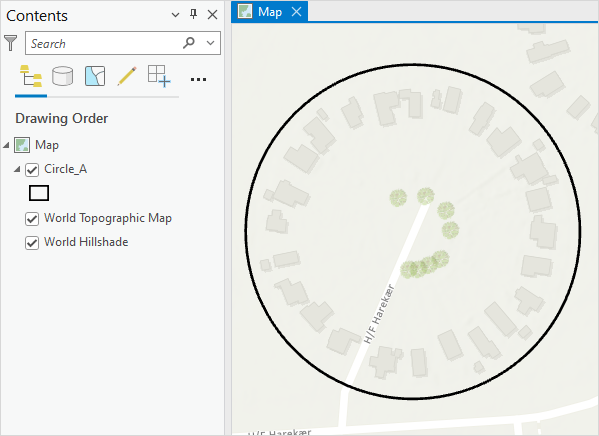
Procedure
- Open the ArcGIS Pro project.
- Find the centroid of the circle polygon feature and note the longitude and latitude values. Refer to How To: Find the centroid of polygons using Calculate Geometry in ArcGIS Pro for instructions. The image below shows the longitude and latitude values of the centroid created in the attribute table.
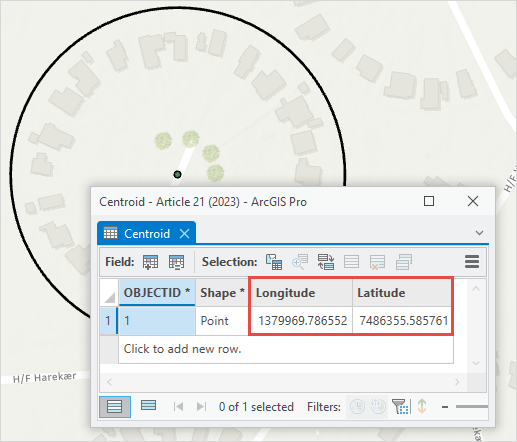
- Create a new line feature class in the geodatabase.
- In the Catalog pane, right-click the geodatabase and click New > Feature Class.
- In the Create Feature Class pane, specify a name for the line feature class in the Name parameter.
- For Feature Class Type, select Line from the drop-down list.
- Click Finish. The line feature layer is automatically added to the Contents pane.
- Add the Distance, Bearing, Longitude, and Latitude fields to the attribute table of the line feature layer. Use the following steps to do so.
- In the Contents pane, right-click the line feature layer and select Attribute Table.
- On the ribbon, on the Data tab, click Fields in the Data Design group.
- In the field view, click Click here to add a new field..
- Specify a name for the field in the Field Name column.
- Double-click the Data Type column of the field and select Double from the drop-down menu.
- On the ribbon, on the Fields tab, click Save in the Changes group.
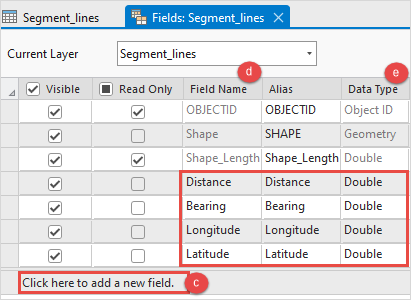
- In the attribute table of the line feature created in Step 3, click Click to add new row., and add the values for each field.
- For the Distance field, specify a value greater than the radius of the circle polygon feature. In this example, the distance is specified as 100. Use the same value for all the Distance field attributes.
- For the Bearing field, specify the bearing values in increasing order with the desired interval.
- For the Longitude field, specify the field with the longitude value found in Step 2. Use the same value for all the Longitude field attributes.
- For the Latitude field, specify the field with the latitude value found in Step 2. Use the same value for all the Latitude field attributes.
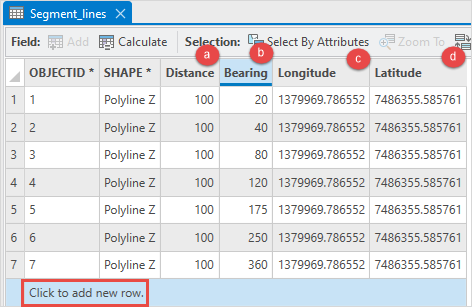
- Use the Bearing Distance To Line tool to create a new line feature layer based on the attribute values specified in Step 5.
- On the ribbon, on the Analysis tab, click Tools in the Geoprocessing group.
- In the Geoprocessing pane, search for and click the Bearing Distance To Line tool.
- Select the line feature layer from the Input Table drop-down list.
- For Output Feature Class, click Browse
 and specify the location and name for the line feature layer.
and specify the location and name for the line feature layer. - For X Field, select the Longitude field from the drop-down list.
- For Y Field, select the Latitude field from the drop-down list.
- For Distance Field, select the Distance field from the drop-down list.
- For Distance Units, specify the unit used to calculate the distance. In this example, Meters is selected.
- For Bearing Field, select the Bearing field from the drop-down list.
- For Bearing Units, select Decimal degrees from the drop-down list.
- For Spatial Reference, select Current Map [Map] from the drop-down list.
- Click Run.
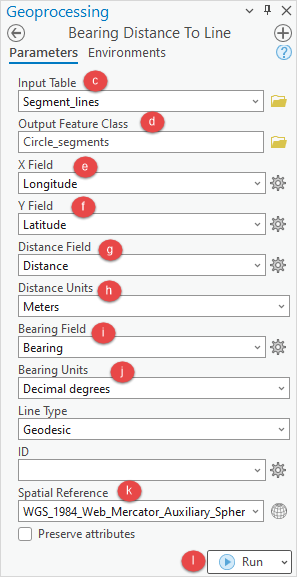
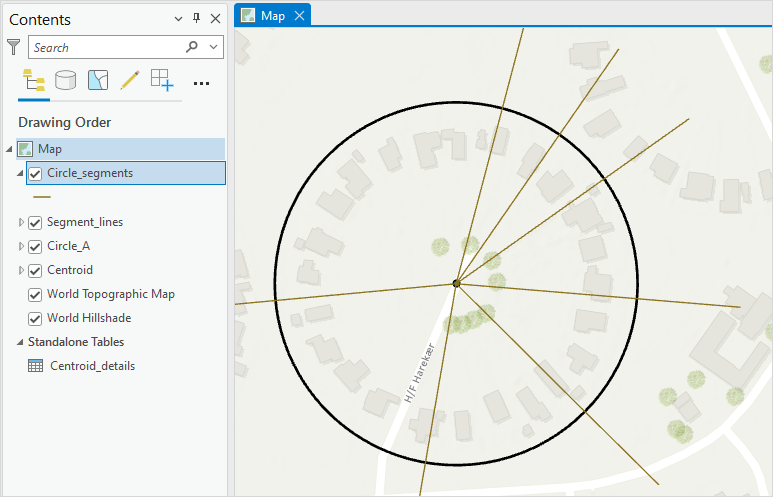
- Divide the circle polygon feature based on the line segments created in Step 6 using the Split tool. Refer to ArcGIS Pro: Split features with other features for instruction. Select the line segments for Input Features and select the circle polygon feature for Target Features.

The image below shows the circle polygon feature divided into specific angle segments in ArcGIS Pro.
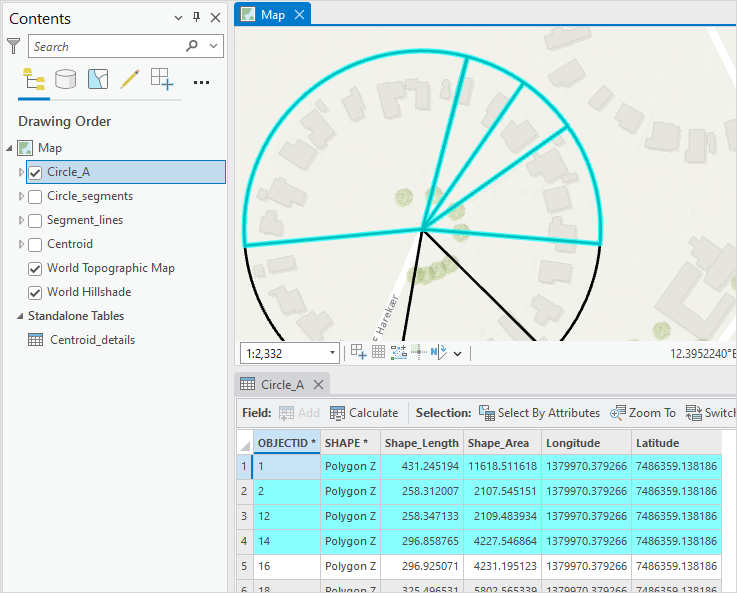
Article ID: 000030890
- ArcGIS Pro 3 1
- ArcGIS Pro 3 0
- ArcGIS Pro 3 2
Get help from ArcGIS experts
Start chatting now

